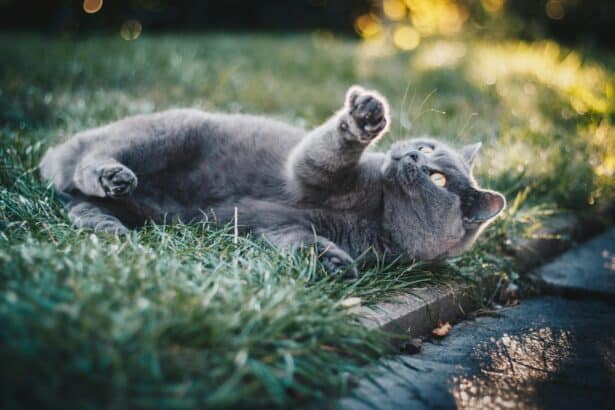Understanding the world of the alley cat
Unique origins and features
Alley cats, more precisely known as non-purebred domestic cats, don’t have a clear history like their purebred counterparts. They’ve been evolving alongside us since the dawn of time, certainly since our ancestors began to settle down and accumulate surplus food, attracting opportunistic little felines. Over time, these wild felines began to live in synergy with humans, forming the basis of the domesticated animal we know today.
The fantastic thing about alley cats is their genetic diversity. They can come in an infinite range of colors, sizes and hair types. From ebony-black cats to tiger cats and snow-whites; from medium-sized cats to big, scary cats; from short-haired to long-haired and even curly-haired – alley cats simply win when it comes to genetic variability. This genetic diversity also gives them a certain robustness in terms of health, as they are not subject to the same genetic problems that can affect certain pure breeds.
Typical behavior
When it comes to behavior, every alley cat is unique. That said, there are some common characteristics you can expect from your cute companion. Alley cats are often independent and like to spend time alone. They are naturally curious, like to explore their environment and can sometimes be mischievous.
To better understand your cat’s behavior, you need to learn how to interpret its body language. Tail positioning, ear movements, facial expressions, all contribute to telling you how your cat is feeling at any given moment. Alley cats are also very expressive vocally. They can meow, scold, hiss and purr to express their feelings, desires or displeasure.
Specific nutrition for alley cats: What and when to feed
Beneficial foods
As strict carnivores, cats have very specific nutritional requirements. Like all cats, alley cats need a diet rich in protein and moderate in fat. They need meat for a source of protein and fat, as well as taurine, an essential amino acid that their bodies can’t produce.
In addition to proteins and fats, cats also need certain minerals, vitamins and omega-3 and 6 fatty acids. Cats also need some carbohydrates in their diet, but in minimal quantities. To help cat owners meet these needs, many cat food manufacturers offer complete and balanced cat foods.
Food frequency and portions
The amount of food you should feed your alley cat depends on several factors. These include the cat’s age, weight, general health, activity level and sex. A growing kitten, for example, has higher energy requirements than an adult cat and needs to be fed more frequently. Similarly, a pregnant or nursing female will have higher dietary requirements to support the growth of her kittens. A veterinarian or feline nutritionist can help you determine your cat’s specific needs.
It’s important to monitor your cat’s weight regularly to make sure he’s neither overweight nor underweight. Obesity in cats is a growing problem and can lead to a number of health problems, including diabetes, arthritis and heart disease. On the other hand, a cat that is too thin can suffer from malnutrition and other health problems. Once you’ve determined your cat’s ideal weight, you can adjust the food portion to maintain this weight.
Essential care for the alley cat: Grooming tips and health care
Grooming routines
Grooming isn’t just about making your cat look presentable. It’s also about maintaining a healthy coat and skin, reducing hairballs and inspecting your pet for signs of health problems. Regular brushing can help remove dead hair and prevent the formation of hairballs, a condition that can lead to digestive problems in cats. What’s more, grooming is an excellent way to check for the presence of external parasites such as fleas or ticks.
In addition to brushing, other grooming tasks for your alley cat may include cleaning ears, brushing teeth and trimming claws.
Main health concerns
Like all other cats, alley cats can be prone to a variety of health problems. Some of the common ailments you can expect include dental problems, infectious diseases, parasitic diseases, dermatological disorders, behavioral problems and metabolic diseases such as diabetes.
Regular visits to the vet for routine check-ups can help detect these health problems at an early stage, when treatment is often more effective and less costly. What’s more, if your alley cat hasn’t yet been spayed or neutered, consider doing so. Neutering has been shown to reduce the risk of certain types of cancer and behavioral problems, while helping to control the stray cat population.
Creating a healthy environment for alley cats
Exercise and mental stimulation
Alley cats have a natural hunting instinct, so they need exercise and mental stimulation to stay happy and healthy. Playing with your cat regularly, providing him with interactive toys and mental challenges can greatly contribute to his physical and mental well-being. Chasing games, chew toys and claw scrapers can give your cat a chance to exercise physically, while food puzzles and interactive toys can help keep him mentally stimulated.
Personal chat area
In addition to exercise and mental stimulation, another crucial aspect of enriching your alley cat’s environment is to provide him with a personal space where he can feel safe and calm. This could be a cat tree with perches at different levels, a cozy kennel or a favorite sunbeam. Providing your cat with a space of her own can help reduce stress and anxiety and improve her overall well-being.
Your gutter companion deserves the best
In conclusion, a healthy, happy alley cat is one that is well fed, well cared for and lives in a safe, stimulating environment. As an alley cat owner, your job is to provide your four-legged friend with the care and support he deserves, so he can live a long, happy and healthy life. And remember: every cat is unique and has its own preferences, personality and needs. Get to know your cat individually and do your best to meet its specific needs.
Providing a quality life for your cat starts with understanding its needs and being aware of the challenges it may face. Enrich your knowledge so you can best meet its diverse requirements, while enjoying the beautiful company of this little feline. What’s more, taking out insurance can help you cover unexpected health expenses that may arise throughout your cat’s life.





